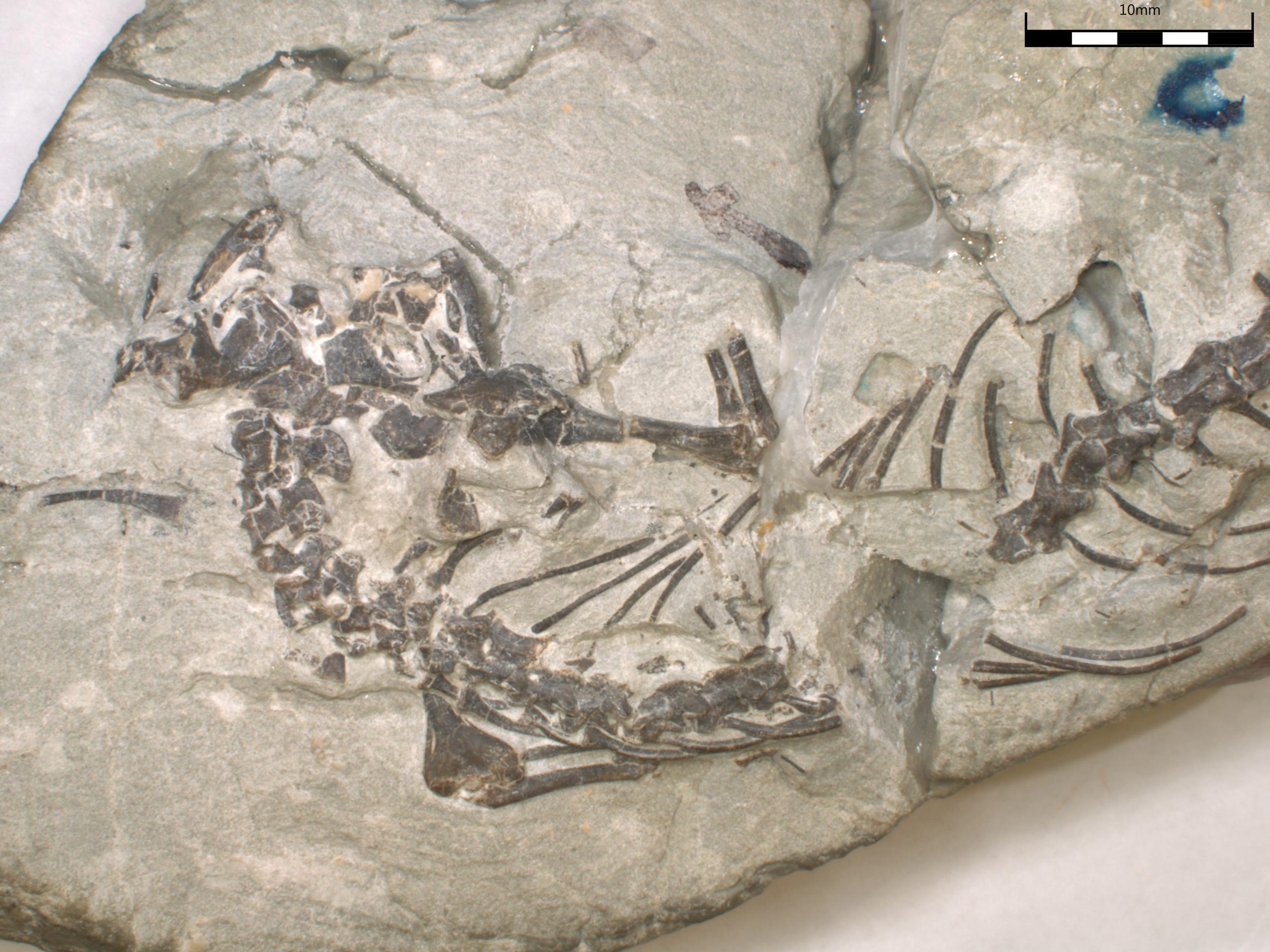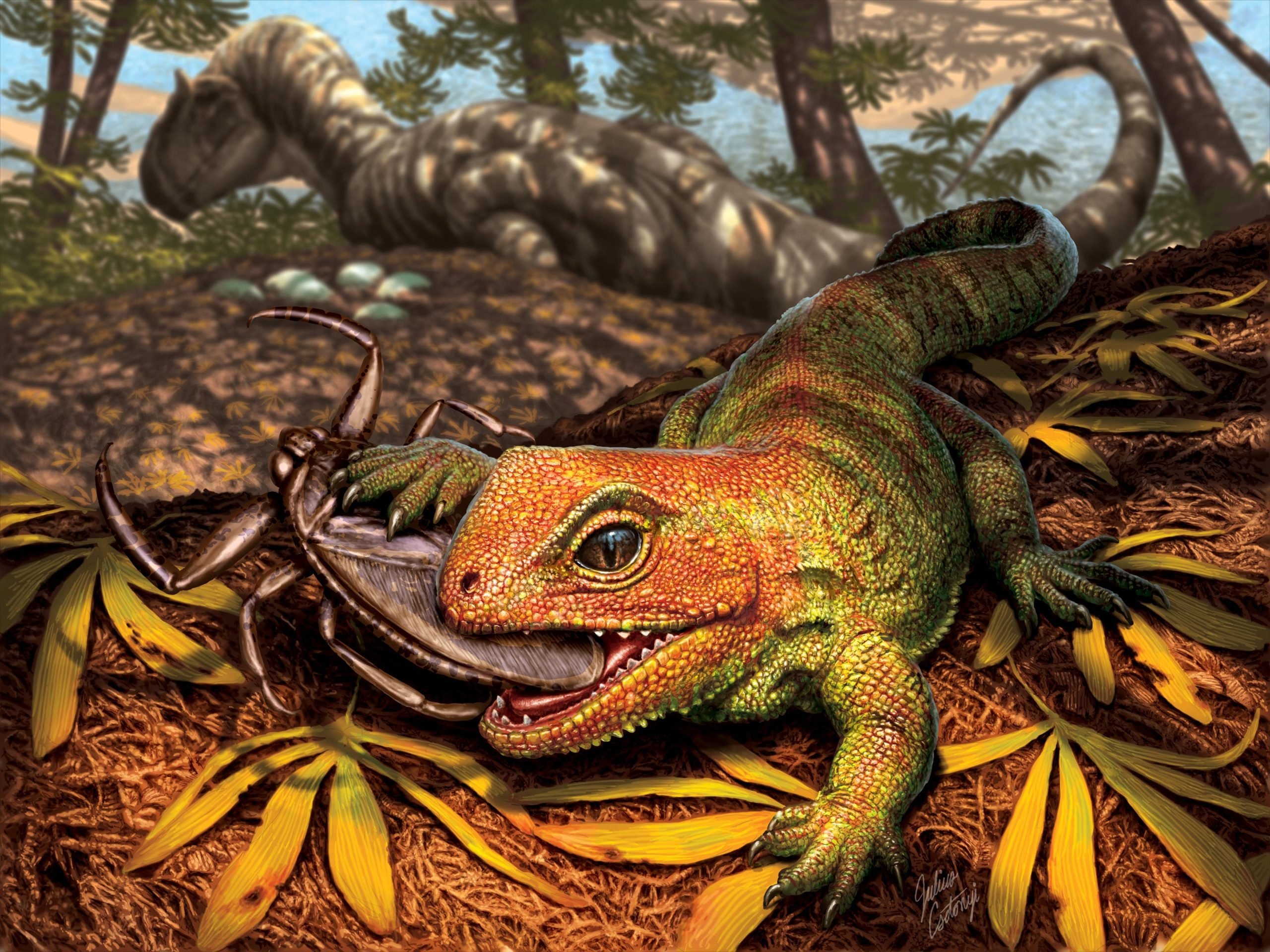A new genus and species of fossil lizard has been described from two fossilized specimens found in eastern Inner Mongolia, China.

Close-up of the holotype of Moqisaurus pulchrum. Image credit: Dong et al., doi: 10.1016/j.cretres.2022.105363.
The newly-discovered species, dubbed Moqisaurus pulchrum, existed during the Early Cretaceous epoch, between 118.7 and 119.2 million years ago.
“The Early Cretaceous was an important period in the diversification of squamates (lizards and snakes),” said lead author Dr. Liping Dong, a paleontologist with the Institute of Vertebrate Paleontology and Paleoanthropology and the Center for Excellence in Life and Paleoenvironment at the Chinese Academy of Sciences, and her colleagues.

“Lizard fossils from this period are known from North and South Americas, Europe, North Africa, Myanmar, and Central and eastern Asia, and they are represented by terrestrial, scansorial, aquatic and gliding species.”
“Some of the most completely preserved fossil lizards from this period have come from China, with the added bonus that some species (e.g. Yabeinosaurus, Dalinghosaurus) are known from multiple specimens, allowing greater understanding of their growth, variation, and lifestyle.”
“Most Early Cretaceous Chinese lizard fossils have come from deposits of Liaoning and neighboring parts of Inner Mongolia, and represent components of the famous Jehol Biota.”

Moqisaurus pulchrum had an estimated snout-vent length of 5-6 cm (2-2.4 inches).
“Of all the contemporaneous Chinese squamate species, Moqisaurus pulchrum is most similar to Liushusaurus acanthocaudata, a small lizard from the Jehol Biota,” the researchers said.
Moqisaurus pulchrum is represented by the fossilized remains of two individuals: a partial skeleton with a well-preserved skull and a nearly complete skeleton.
The specimens were found at the Gezidong locality of the Early Cretaceous Moqi Fauna in eastern Inner Mongolia, China.

“This is the first squamate material reported from this locality, increasing knowledge of the local assemblage diversity, and providing evidence of a similarity between the recently recognized Moqi Fauna and the better known Jehol Biota,” the scientists said.
According to the team, the well-preserved pectoral girdle in Moqisaurus pulchrum provides the earliest fossil record of a mesosternal fontanelle.
“The presence of a mesosternal fontanelle in Moqisaurus pulchrum is currently the earliest record of this feature in a fossil lizard,” the authors said.
“It suggests that the fusion of mesosternal rods occurred early in squamate evolutionary history, but the absence of the fontanelle in the roughly contemporaneous Meyasaurus and Liushusaurus indicates there was already variation in sternal configuration among early squamates.”
Source: sci.news








